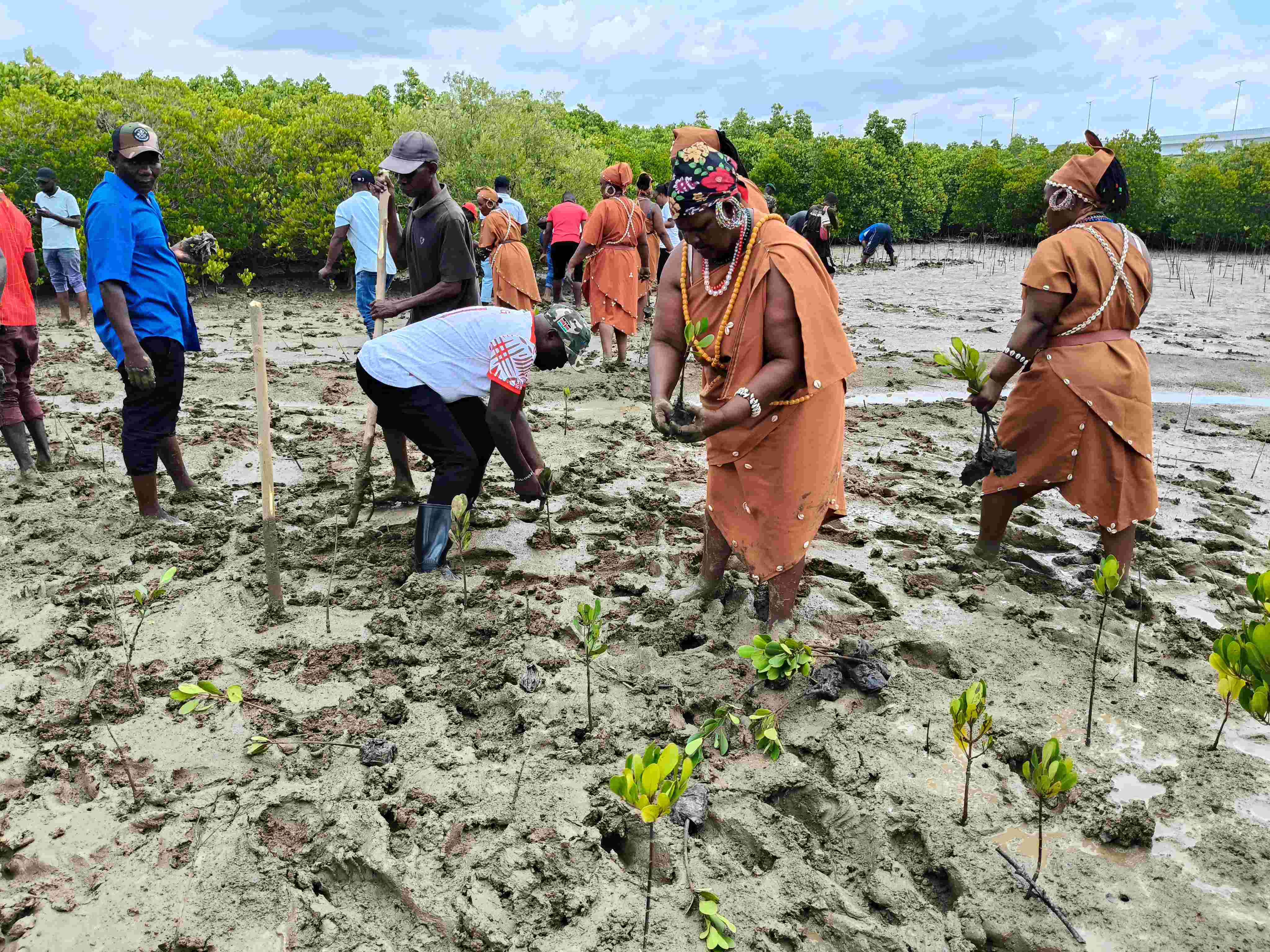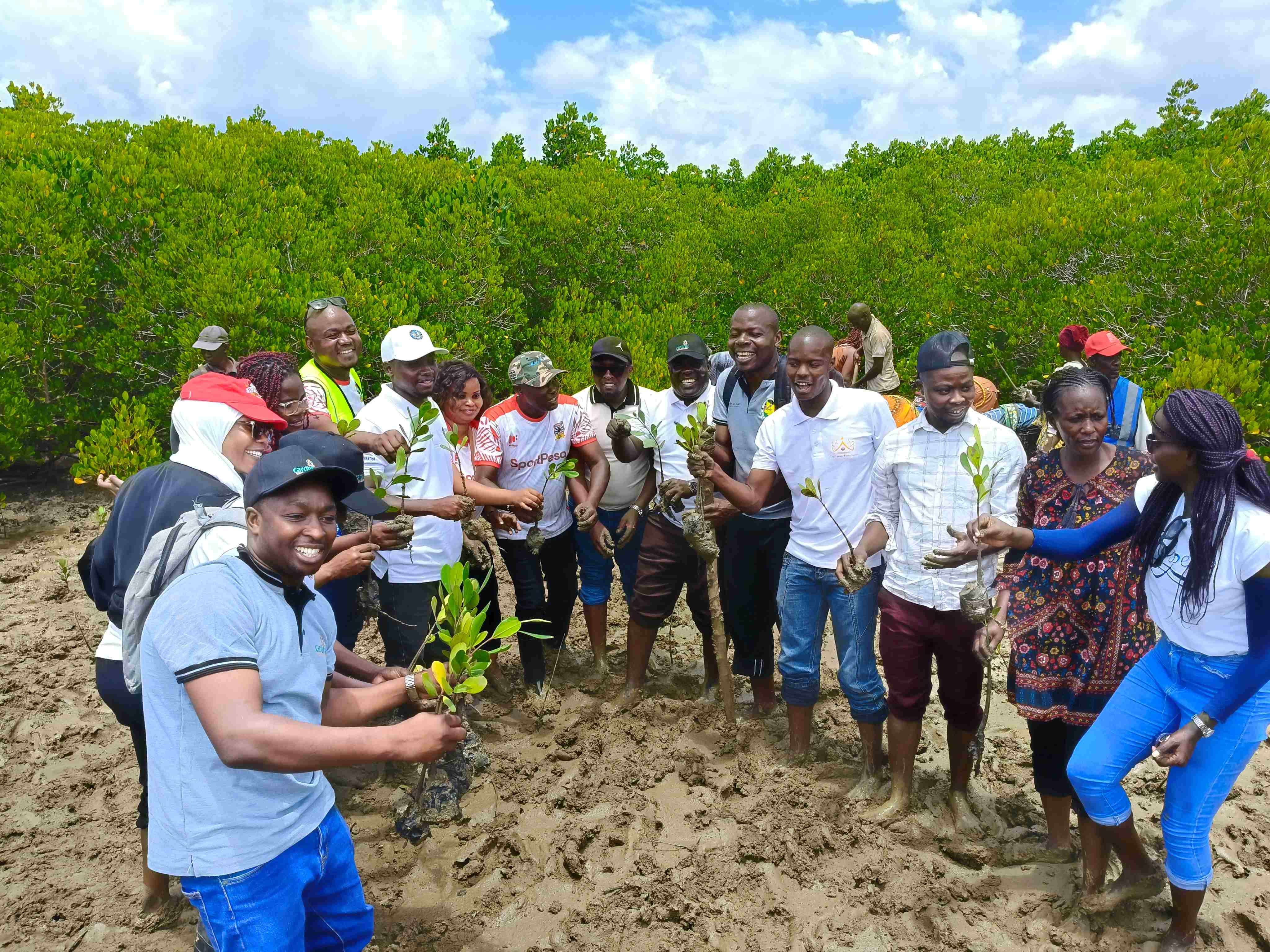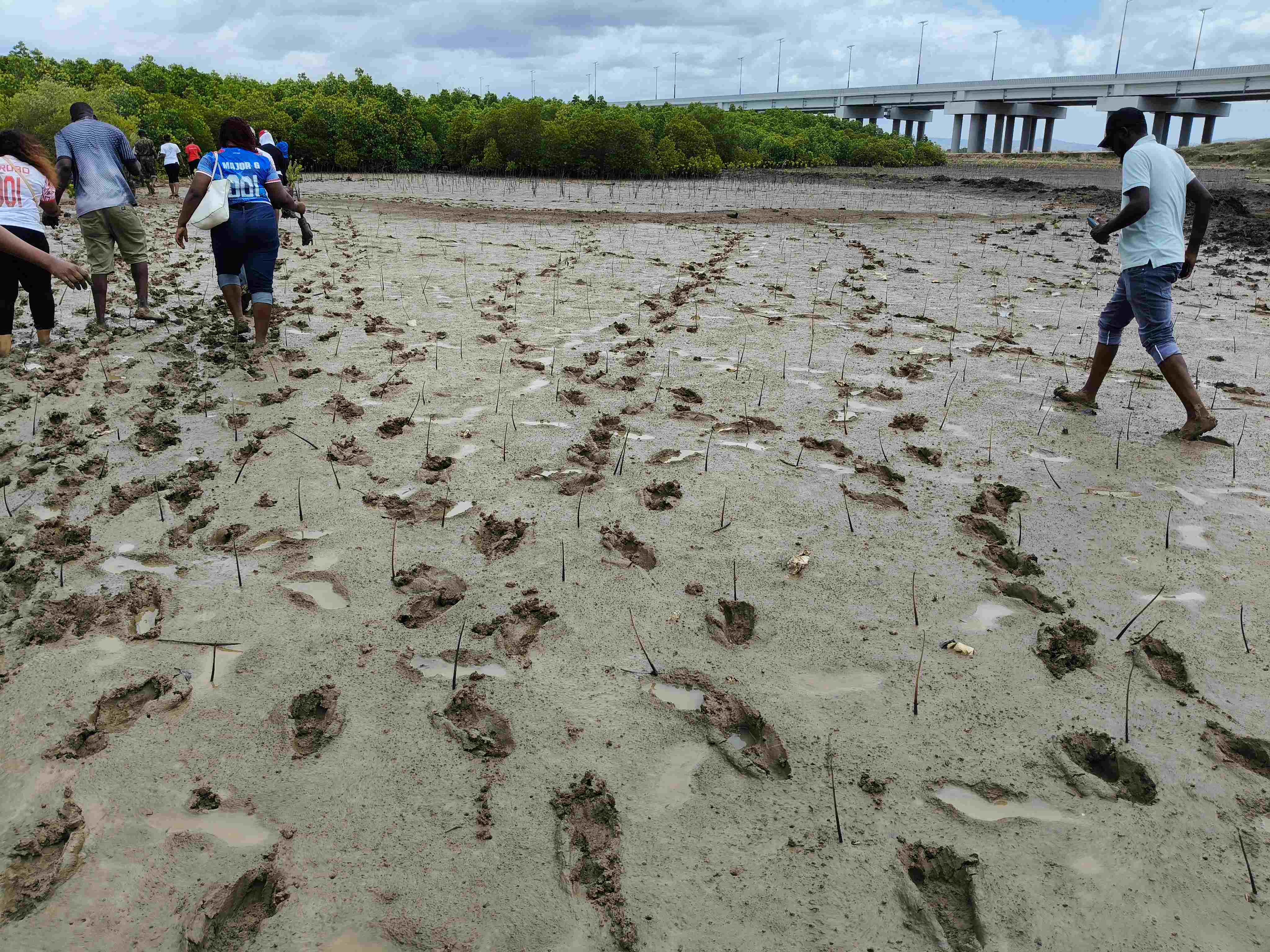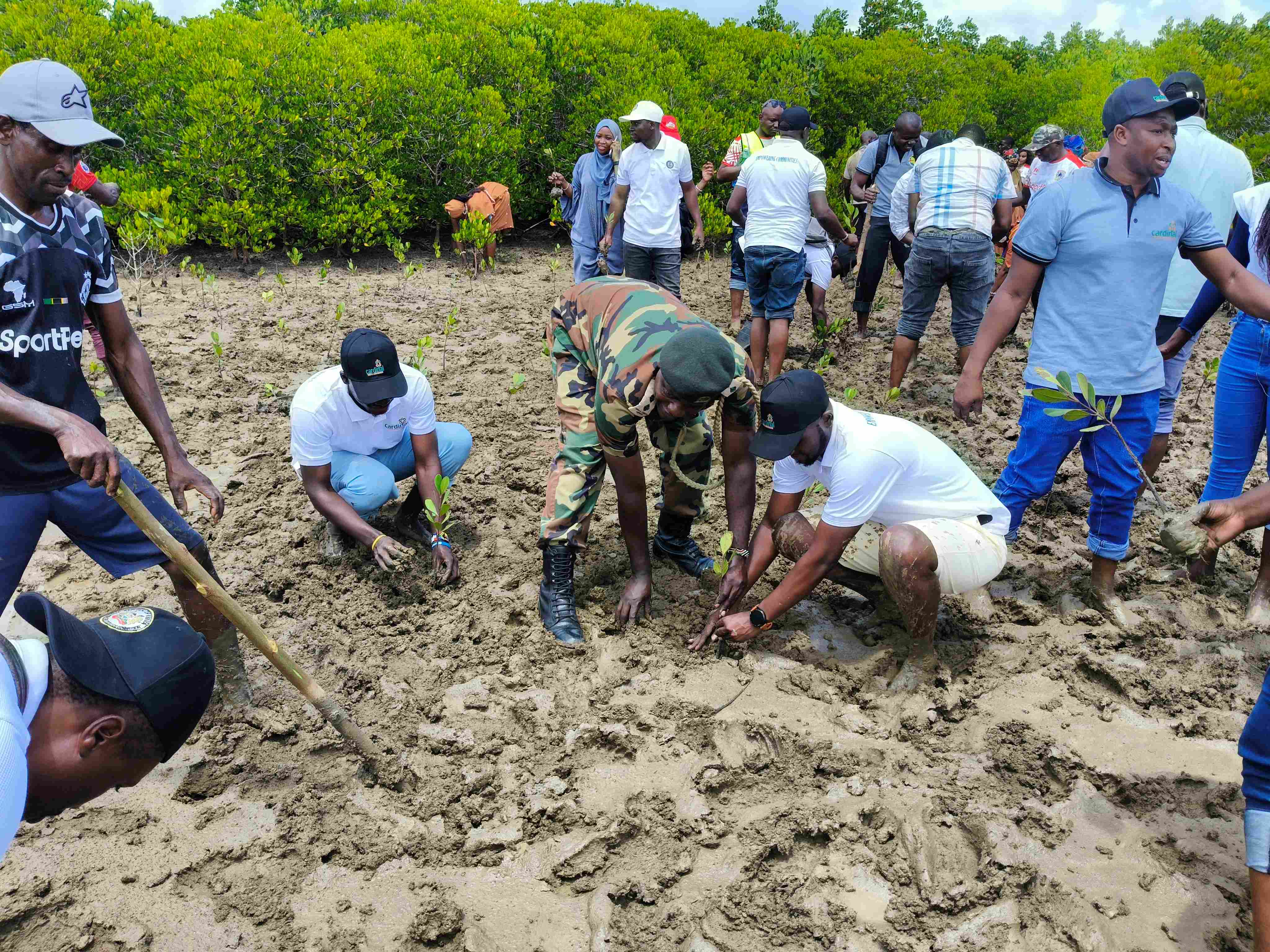 Nyumba ya Mumbi Women Dancers at Mteza Bridge in
Dongo Kundu on Monday / BRIAN OTIENO
Nyumba ya Mumbi Women Dancers at Mteza Bridge in
Dongo Kundu on Monday / BRIAN OTIENO Cardinal Youth Association members at Mteza Bridge
in Dongo Kundu on Monday / BRIAN OTIENO
Cardinal Youth Association members at Mteza Bridge
in Dongo Kundu on Monday / BRIAN OTIENO Mangrove trees that died after they were planted at
the wrong place in Mteza bridge / BRIAN OTIENO
Mangrove trees that died after they were planted at
the wrong place in Mteza bridge / BRIAN OTIENO Cardinal Youth Association members plant trees at
Mteza Bridge in Dongo Kundu on Monday / BRIAN OTIENO
Cardinal Youth Association members plant trees at
Mteza Bridge in Dongo Kundu on Monday / BRIAN OTIENOKenya’s forest cover dream is moving slowly
because of the high rate at which trees planted die leading to wasted efforts,
an environmental enthusiast has said.
Maureen Kemunto, an advocate of the High Court and
Cardinal Youth Association legal officer, on Monday said many times Kenyans
plant trees in areas where they are not adapted to.
“Kenyans plant wrong trees in wrong areas,” she
said during a tree planting exercise at the Mteza bridge along the Dongo Kundu
bypass.
At the Coast, for example, the most common trees
are mangrove trees, which have a high success rate.
However, there are many varieties of mangrove
trees, about nine, that require different soil and weather conditions, thus
sometimes people get it wrong.
“So, you have to pick a variety that specifically
will increase your chance of achieving the forest cover that you want,” Kemunto
said.
At Mteza bridge, for instance, about two acres of
mangroves died after a group planted the wrong species of mangroves at a muddy
area.
Mbuta Mazingira member Bakari Randuni said the
group failed to seek advice from locals and ended up wasting trees worth tens
of thousands of shillings.
He called on groups that want to plant mangrove
trees to ask locals for advice before planting.
“The other day, a group came here and planted the
Mkandaa variety in a muddy area which is wrong. They should have planted Mkoko
in the muddy area and Mkandaa in a less muddy area,” Randuni said.
He said the Mkoko variety helps aerate the soil,
create a breeding ground for crabs and other marine organisms.
“They provide strong poles for construction of
houses,” Randuni said.
Cardinal Youth Association chair Maj (rtd) Frank
Anyega said they identify gaps in the society and try to bridge them through
various initiatives.
“After we identify the gaps, we narrow down to
specific groups, which we fund in different ways. We want a better society in a
better environment,”Anyega said.
For the environment, Anyega said they target to
plant a million mangrove trees by the end of 2026.
The Monday exercise was phase seven of the plan
and they planted 2,000 trees.
Last year alone, they planted 632,000 mangrove
trees across the Coast region.
This in partnership with many other groups
including Taji Langu Foundation, Huduma Centre, Kenya Ports Authority, Shabana
FC Fans Club, among others.
Cardinal Youth Association secretary general Ken
Lwambi they are working towards realizing President William Ruto’s agenda of
planting the 15 billion trees by 2032.
Lwambi said mangrove trees have many benefits
which are in line with CYA’s dream, of empowering communities.
Shabana FC Fans Club Coast branch chair Douglas
Nyamache said Kenyans need to take an interest in conserving the environment
for future generations.
Taji Langu Foundation’s Mwanaumi Bakari said
conserving the environment is akin to prolonging life.
She said without a safe environment, life will be
difficult for not only humans but also animals.
Nyumba ya Mumbi Women Dancers chair Faith Mureithi said anyone who wants to breath fresh air, should take an initiative to plant trees.
INSTANT ANALYSIS:
In December 2022, President William Ruto launched the National Tree Planting and Growing Initiative with the goal of planting 15 billion trees by 2032.
This is meant to combat climate change, restore ecosystems, and increase Kenya’s forest cover to 30 per cent. Kenya’s forest cover by 2021 was 8.83 per cent, according to the National Forest Resource Assessment. The Ruto initiative aims to reverse deforestation, reduce greenhouse gas emission and improve livelihoods.












